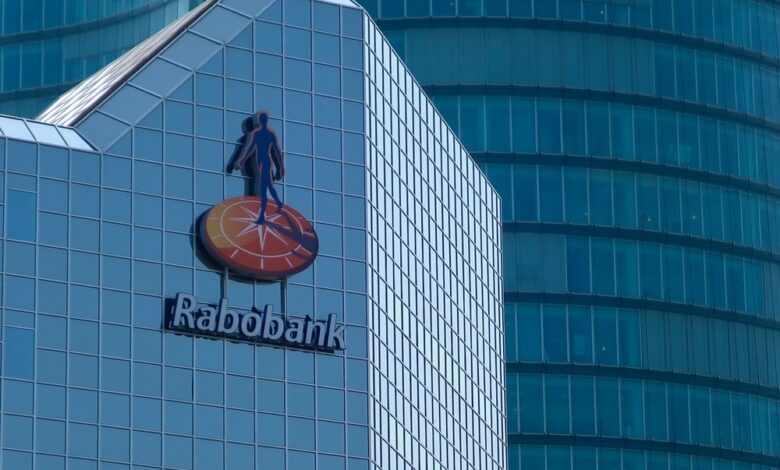Netherlands: Past, present and future of Rabobank, a cooperative

AMSTERDAM – Rabobank emerged from small credit unions founded by farmers and horticulturists starting at the end of the 19th century in the Netherlands. The common thread since its inception is to offer financial solutions for economic needs and to realise social objectives.
In practice, Rabobank has frequently reoriented its strategy, business model and governance structure in anticipation of or in response to shifting trends in society, technology, competition, banking regulation and supervision, etcetera.
Collaboration in rural areas
Dutch farmers and horticulturists wanted to modernise but had difficulty getting credit. They solved this problem by founding credit cooperatives. The idea for such cooperatives was developed by the German rural mayor Friedrich Wilhelm Raiffeisen. The local cooperative banks [LCBs] became a great success. The farmers could borrow money for a reasonable interest rate, and production and yields increased thanks to their investments. It was all possible due to the savings of farmers who were well off. Other citizens also benefitted. Many brought their savings to the farmers’ lending banks and received a good interest rate.
After the foundation of the first LCBs in the years 1895-1897, two central organisations were created in 1898. During the next decades, LCBs of both co-operative banking groups, i.e. Raiffeisenbanken and Farmers’ banks [Boerenleenbanken], spread rapidly throughout The Netherlands. Members of the LCBs decided to reserve the largest part of the realised annual surplus, while a modest part was reinvested in local societies. This capitalisation and reinvestment policy has been pursued ever since and has been recorded in all subsequent articles of association.
Each LCB initially applied the principle of solidarity between its members. Since the 1960s, LBs also serve non-members.
From a farmers’ lending bank to a bank for everyone
Starting in the 1950s, the farmers’ lending banks also started welcoming non- agricultural entrepreneurs and private individuals. Meanwhile, there were some 1,300 LCBs. They evolved into general financial services providers, no longer only for savings and agricultural credit.
Clients could turn to the banks for a loan, but also for home mortgages, business financing, payment services and insurance. In the meantime, automation enabled new forms of payment, such as bank transfers, acceptance giros and checks. The client base also increased enormously. The LCBs opened more and more branches in large cities and new residential areas. Everyone had a Rabobank branch somewhere close by. This is the name that has been etched on building facades since 1972, when the two central banks merged into Rabobank Nederland. All LCBs remained independent cooperatives, firmly rooted in their communities. Rabobank Nederland itself was also set up as a cooperative, with all LCBs as members.
A worldwide “financial warehouse”
The Dutch business community continued to grow rapidly in the 1970s and 1980s; and so did Rabobank’s service provision to businesses. It became the principal banker of many large organizations. There were subsidiaries and participations for specific services, such as Interpolis [insurance], De Lage Landen [leasing] and Robeco [asset management]. Gradually, the Rabobank Group turned into a “financial warehouse” with a complete service portfolio.
Starting in the early 1980s, Rabobank expanded across the border. It opened branches in Frankfurt and New York. And acquired retail banks in rural areas worldwide, including in Australia, the USA [California], Brazil and Chile. At its height [in 2006], Rabobank had branches in 42 countries. This is how Rabobank evolved from a purely Dutch bank into an international financial services provider, with a focus on the food and agriculture sector.
More opportunities, more focus
Technological developments changed the way our clients pay and do their banking. The debit card and ATM were the first to appear, followed by the payment terminal and making purchases with your debit card in stores. Then at the end of the 1990s, Internet banking made its appearance. Rabobank was one of the first banks that made products and services available through online channels. This caused the number of Rabobank branches to decreased from around the year 2000. Clients could now do more and more of their banking transactions themselves online. They had their bank close at hand day and night in the form of the Rabo Banking App.
One Rabobank, one cooperative
In 2020, Rabobank had about 7.3 million clients in the Netherlands, of which 2 million were members. They could provide input on policy through the Member Councils, befitting a LCB that has strong ties with the local communities. In the meantime, the LCBs were no longer independent cooperatives; Rabobank became one cooperative in 2016. The bank said good-bye to some independent divisions, while others, like Schretlen & Co and FGH Bank, joined Rabobank.
Current mission and vision
Being a cooperative, profit maximalisation has never been our overriding purpose, but profits are necessary for meeting capital requirements, continuity and the pursuit of our social goals. Rabobank stays faithful to the ‘dual-bottom line’ approach. Through its ‘Banking for The Netherlands’ and ‘Banking for Food’, Rabobank commits itself to achieving progress in society and in the Sustainable Development Goals defined by the United Nations. ‘Banking for The Netherlands’ is closely linked with our social agenda which was formulated in co-operation with our member representatives. In accordance with its
Dutch roots, the international strategy centres around ‘Banking for Food’. Rabobank intends to Contribute to resolving the food issue worldwide in view of the predicted increase in world population, formulated in our mission: “Growing a better world together”.
Concluding considerations
The cooperative organisational form has great merits. As a core feature of the cooperative governance, membership has always led to divergent internal dynamics and a different – strategic – orientation compared to other major financial institutions. Rabobank is indisputably different and has a ‘presence value’ in Dutch society and banking. Local autonomy of LCBs and active participation of our employees
in local networks and communities are cherished as distinguishing characteristics of our cooperative bank. There is a distinctive place for a cooperative customer-oriented bank that provides relevant knowledge, networks and financial solutions nearby.
Written by Dr. J.M Hans Groeveveld and extracted from International Cooperative Alliance’s booklet, Understanding our history to build a stronger future
https://thecooperator.news/cooperatives-europe-to-hold-conference-in-cardiff/
Buy your copy of thecooperator magazine from one of our country-wide vending points or an e-copy on emag.thecooperator.news







